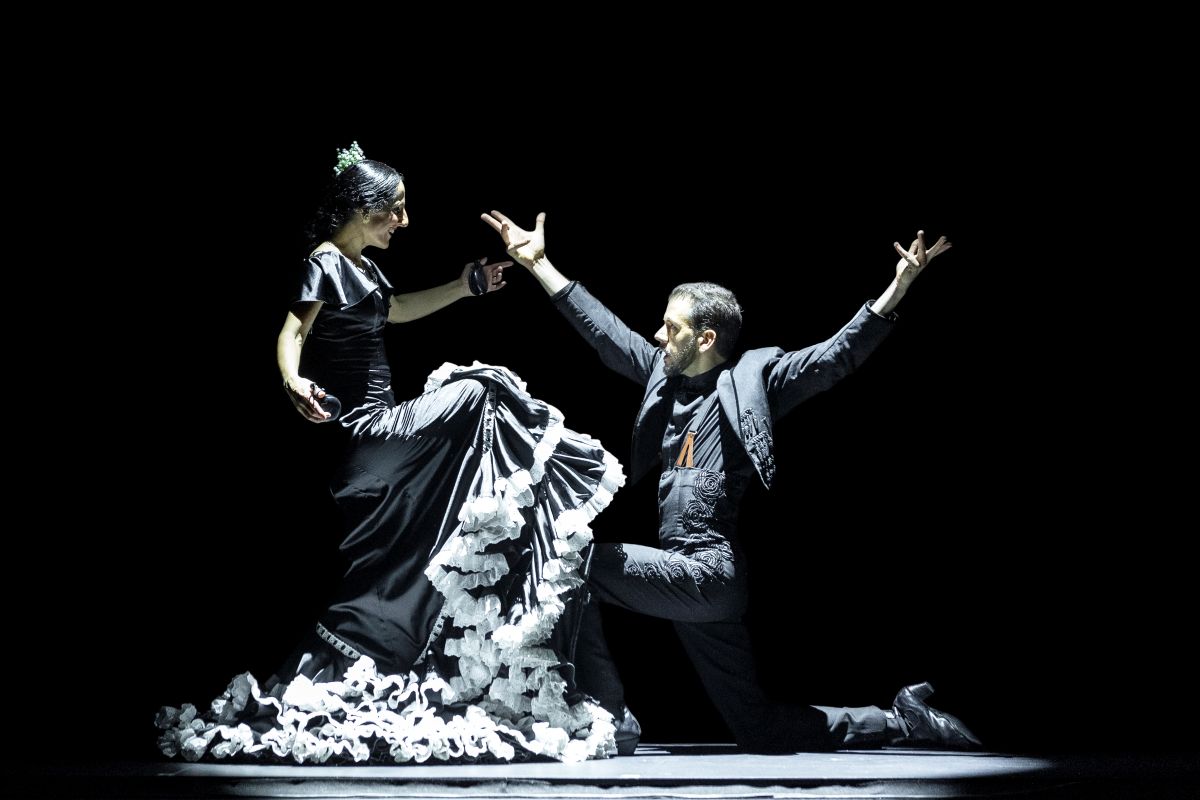The revelation of love is that nothing else matters—not even the capitulation of the other. To love greatly is, of course, a sensual act, but it is also a thinking act. The idea that love is blind is, I believe, a fallacy. Love can come upon one suddenly, but before action is taken and a heart is given, a great deal of thinking must occur. This, more than anything, is the proper realm of metaphysics: what we love, how we love, and how this transforms us are among the sublimest of questions.
Perhaps no art form depicts the game of love better than dance—where one body sees another, desire is sparked, and culminates in entwinement. The stages in between are push, pull, and displays of adornment that ask: “Do you see me?” (Shift the emphasis on a single word in that sentence and the meaning shifts.) Sight, here, is knowledge—of the other, of longing, of self.
The Flamenco Festival at Sadler’s Wells is always worth waiting for. I chose just one show and was glad it was this one. The other offerings may well be excellent, but this production mesmerised me—above all, for its robustness. Mercedes Ruiz and José Maldonado are on fire. Their moves were audacious, their skill sublime. Though it is Ruiz’s show—she is the grand artist—it is to her credit that she has chosen a partner who matches her flair and artistry. Maldonado both supports her and shines in his own right: a surprisingly athletic dancer, bringing new textures to flamenco.
Ruiz wields her costume not merely as adornment, but as an instrument: the shawl, the frothing dress, the fan—all become extensions of her expression. Maldonado does the same, though more sparingly.
Though her costumes are unmistakably feminine, Ruiz often carries, at least to my eyes, a commanding, almost masculine energy. Perhaps that’s natural—this is her company, her direction, and having begun dancing at five, she’s the more seasoned artist. And then, amid scenes of power, comes a shift: moments of deep eroticism. At one point, she leans back against Maldonado’s chest and rests there, as if it’s her final destination. In another scene, he removes his jacket and helps her put it on—an intimate act that is both sensual and symbolic: a woman donning a lover’s garment, but also inhabiting a masculine identity.
This duality is mirrored when Maldonado wraps Ruiz in her shawl, then later, after yielding the stage to her, wraps himself in it. He is not diminished by the gesture.
As director, Ruiz gives Maldonado moments to shine. Two stand out: one, a set danced entirely from a chair, revealed a link between flamenco and tap I hadn’t noticed before. In the penultimate set, he dances solo, then joins Ruiz again, rising above her, hand aloft like a beacon.
Each set ends with a distinctive dramatic tone—crafted and beautiful in its own right. There is grace here in both movement and stillness. Sometimes the dancers move to full instrumentation, sometimes only to guitar, and sometimes in silence—punctuated by explosive cries from the singers backstage: “Hazar!” “Allez!”
Who knew finger-clicks, claps, and chest-slaps could have such musicality? Never excessive, always exact.
The direction, choreography, music, and lighting—often in magical conical beams—are superb.
If I have one quibble: in the final set, the others recede and Ruiz sings solo. It’s an affirmation of flamenco’s power, I think, but I missed the playful richness of David Lagos’ voice.
The singing is wondrous. At times, when Ruiz and Lagos share the stage, it feels as if he is luring her into even more intricate forms. Their comfort suggests a long collaboration, though it’s guitarist Santiago Lara with whom she’s most often worked. His playing—mellow, modern, echoing older forms—reveals Arab undertones, and, in this performance, a surprising affinity with South Asian vocal rhythm: taka taka tay tay ta.
Ruiz and Maldonado dance for us, but also with and to each other—unfurling their peacock feathers. When one dances, the other watches. That too—this enticement—is part of the game of love. Ruiz, with a shoulder curl and a smile, flirts not just with him, but with us. It’s utterly endearing. A powerhouse of artistry.

